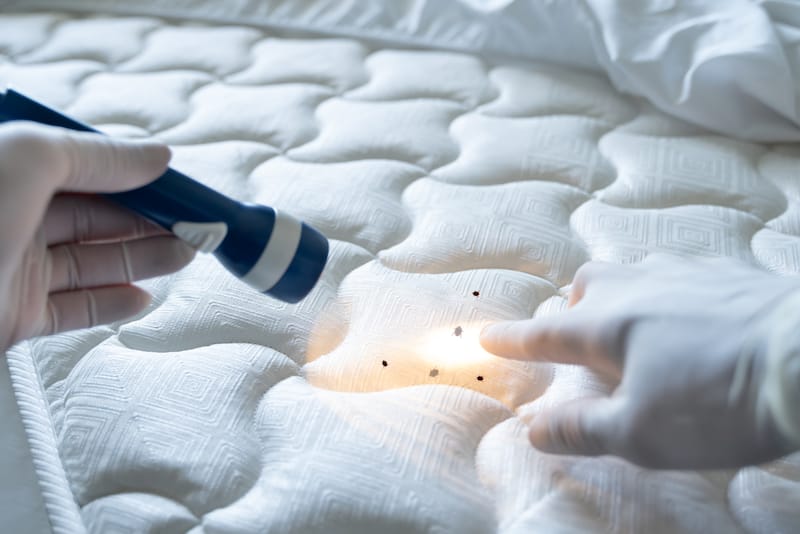How Hotels Prevent Pests in Laundry Facilities? Strategies and Solutions
Share
In the hospitality industry, maintaining pristine environments is critical for guest satisfaction. An often overlooked aspect of hotel maintenance is ensuring the cleanliness and pest-free status of laundry facilities. The question of how hotels prevent pests in laundry facilities is one of utmost importance as these areas are prime targets for infestations that can tarnish a hotels reputation.
Ensuring that pests do not infiltrate laundry facilities requires a comprehensive approach. This includes regular inspections, adopting best practices in cleanliness, and using advanced pest control technologies. In this article, well delve into the various strategies that hotels employ to keep their laundry areas free from pests.

Understanding the Attraction: Why Pests Target Laundry Facilities
Laundry facilities in hotels are bustling areas, often characterized by warmth, moisture, and ample hiding spotsall of which are appealing to pests. These conditions can attract a variety of pests, including rodents, cockroaches, and even bed bugs. Understanding why pests find these areas attractive is the first step in devising effective preventive measures.
Hotels must be vigilant in monitoring these spaces, not only to maintain the cleanliness expected by guests but also to prevent potential infestations from spreading to other parts of the facility. To learn more about how hotels ensure that pests do not impact their reputation, you can check out this [article](https://trapx.io/blogs/news/how-hotel-reviews-are-impacted-by-pest-complaints) which discusses the impact of pest complaints on hotel reviews.
Regular Inspections and Monitoring
One of the foremost strategies for pest prevention in hotel laundry facilities is conducting regular inspections. This involves routine checks for any signs of pest activity or potential vulnerabilities in the facility. By consistently monitoring these areas, hotel staff can identify issues early and take corrective action before a full-blown infestation occurs.
Technological advancements have made it easier for hotels to monitor pest activity. Using smart sensors and other innovative tools, hotels can keep a close watch on laundry facilities and other vulnerable areas. For more details on how technology aids in pest detection, visit this [link](https://www.rentokil.com/blog/innovation/pest-control-technology-hotels).
Implementing Stringent Cleanliness Protocols
Maintaining high standards of cleanliness is fundamental in preventing pest infestations. Hotels implement rigorous cleaning protocols that include regular sanitation of laundry areas, proper storage of linens, and immediate removal of waste. These practices help minimize the environmental factors that attract pests, such as food sources and hiding spots.
By adopting a proactive approach to cleanliness, hotels can significantly reduce the risk of pest problems. This is not only beneficial for maintaining a positive guest experience but also essential for ensuring compliance with health and safety regulations in the hospitality industry.
Utilizing Integrated Pest Management (IPM) Strategies
Integrated Pest Management (IPM) is a holistic approach that combines various pest control methods to effectively manage and prevent infestations. For hotels, this involves a combination of chemical and non-chemical treatments, as well as preventive measures tailored to the specific needs of the facility.
IPM strategies are designed to minimize the use of pesticides and focus on long-term prevention. This approach not only protects the environment but also ensures the safety of hotel guests and staff. For more information on how IPM is applied in the hospitality sector, consider exploring this [resource](https://study.com/academy/lesson/pest-scan-for-hotel-management-definition-application.html).
Staff Training and Awareness
Training hotel staff to recognize signs of pest activity and understand the importance of maintaining pest-free environments is crucial. Employees should be equipped with the knowledge to identify potential risks and report any issues promptly. Regular training sessions and awareness programs can empower staff to take an active role in pest prevention.
By fostering a culture of vigilance and responsibility, hotels can enhance their pest control efforts and ensure that laundry facilities remain safe and hygienic for all users.
Leveraging Professional Pest Control Services
While in-house efforts are essential, partnering with professional pest control services can provide additional layers of protection. These experts bring specialized knowledge and experience in dealing with pest issues specific to the hospitality industry. They can offer customized solutions and conduct thorough inspections to identify and address potential vulnerabilities in laundry facilities.
Professional services can also provide valuable insights into the latest pest control technologies and methods, ensuring that hotels remain at the forefront of pest management practices.

FAQs
What are common pests found in hotel laundry facilities?
Common pests include rodents, cockroaches, and bed bugs. These pests are attracted to the warmth and moisture of laundry facilities, making them a common target.
How often should hotels conduct pest inspections?
Hotels should conduct pest inspections regularly, ideally on a monthly basis, to ensure early detection and prevention of infestations.
Why is staff training important in pest prevention?
Training staff to recognize signs of pest activity and understand prevention protocols empowers them to contribute to maintaining a pest-free environment. This proactive approach helps identify issues before they become serious problems.
For additional insights on pest management in hotels, read about the innovative [pest control technologies](https://www.ecolab.com/solutions/hotel-pest-control) that are shaping the industry today.
